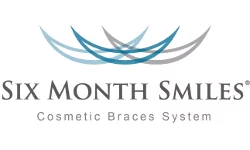The options to replace missing teeth generally fall into three categories:
- Dental implants
- Dentures
- Dental Bridges
Each of these options has unique advantages and disadvantages and in this blog post our Stourbridge dentist, Dr Phil McDermott takes a look at each of them.
 Dental implants
Dental implants
One of the most popular ways to replace missing teeth is to use dental implants. These have a series of advantages over other mechanisms:
- They don’t require removal of otherwise healthy tooth tissue from the teeth either side such as is required with dental bridges.
- Dental implants support the bone around the site where the tooth has been lost. This means that the gingival architecture and therefore aesthetics of the extraction site remain good.

bone resorption around tooth loss site
The cost of dental implants.
The cost of dental implants often can be higher than some other techniques for replacing missing teeth. However, when taking into account the lifetime of the dental implant and the fact that adjacent teeth are not disturbed (unlike with dental bridges) the overall lifetime cost of a dental implant works out often to be cheaper than other forms of replacing missing teeth.
To replace a single tooth with a dental implant often costs around £2000, finance schemes are available which help to break this cost down into a series of monthly payments.
Dentures

Replacing missing teeth with dentures
Gone are the days where dentures look ugly and can easily be noticed. Cosmetic dentures can now be made which harmoniously blend the denture teeth into the surrounding teeth. However, dentures are inherently removable and it is for this reason that many people prefer a permanently fixed option such as a dental bridge or a dental implant.
One of the things that the denture does not do is support the underlying bone like a dental implant does. When the tooth has been extracted the surrounding bone will continue to fall into the extraction site and continually change the shape of the gum in this area. A dental implant is the only truth replacement option that stops this from happening. More information on dentures is here.
Dental bridges.

A dental bridge may require removal of healthy tooth structure either side of the gap
Dental bridges have been around now for approximately 50 years and so have a good track record of being an exceptionally good way to replace missing teeth. Dental bridges can now also be made from beautiful and aesthetic all ceramic materials which mimic teeth perfectly meaning the dental implant completely disappears in your mouth.
However, dental bridges, with two distinct disadvantages.
- The teeth either side of the gap also need to be included. These are known as abutments and it is these abutments which will support the new false tooth in the middle. This means that to replace a single tooth a new three unit dental bridge we need to be made. This increases the cost and also means that otherwise healthy tooth structure either side of the gap has to be removed in order to accept these apartments.
Any dentist will take you that it goes against their nature and training to remove healthy tooth structure.
- 2. The other disadvantage of a dental bridge is that it doesn’t support the underlying bone structure like a dental implant does this mean that in time the gum underneath the new false and suspended tooth may shrink and resorb, this can result in gaps forming underneath the bridge and a poor aesthetic outcome.

Bone loss under a dental bridge meaning it may need to be replaced
 Another way to replace a missing teeth using a dental bridge is to use what is known as a Maryland bridge. Rather than completely remove all of the tooth structure from the teeth either side your dentist will create wings on the inside of the adjacent teeth which support the new false tooth.
Another way to replace a missing teeth using a dental bridge is to use what is known as a Maryland bridge. Rather than completely remove all of the tooth structure from the teeth either side your dentist will create wings on the inside of the adjacent teeth which support the new false tooth.
This can be much more minimally invasive approach but Maryland bridges do have a tendency to occasionally become a bonded, this means you may have to make frequent visits to the dentist to have them re-fixed.
If you have missing teeth and would like to know your options whether that be a bridge, a denture or dental implant then please give our dentist a call or request an appointment online.











